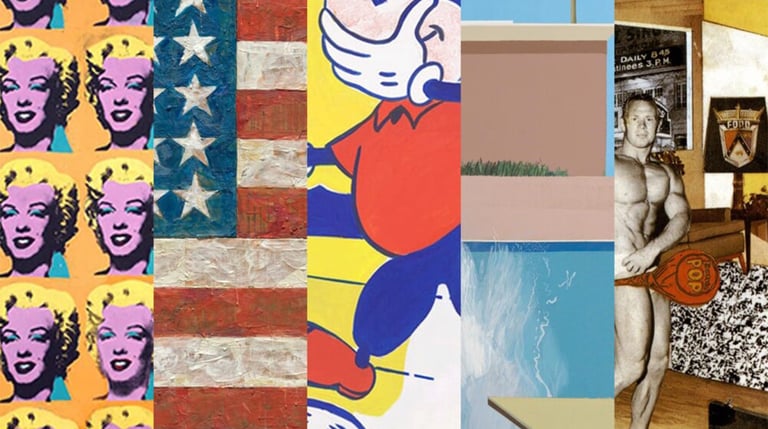Unveiling the Essence of Pop Art
3 Defining Characteristics
Olivia Masters
8/17/20232 min read


Pop art, with its vibrant colors, bold imagery, and unconventional subject matter, emerged as a revolutionary artistic movement in the mid-20th century. Rooted in the celebration of popular culture and everyday objects, pop art challenged traditional artistic norms and transformed the way we perceive art. In this article, we will delve into three defining characteristics that set pop art apart and continue to influence contemporary creative expression.
**1. Bold Imagery and Vivid Colors: One of the most distinctive traits of pop art is its use of bold imagery and striking colors. Artists in this movement embraced vibrant hues and often exaggerated forms to catch the viewer's attention. This approach created a visual impact that was hard to ignore, mimicking the vividness of consumer advertisements and mass media. The use of bright primary colors, along with deliberate contrast and saturation, not only captured the essence of popular culture but also highlighted the influence of consumerism and commercialism on society.
**2. Appropriation of Popular Culture: At the heart of pop art lies the concept of appropriating and recontextualizing images and objects from popular culture. This characteristic challenged the notion of "high art" by incorporating elements from everyday life, such as comic strips, product packaging, and celebrities. By integrating these recognizable and relatable elements into their artwork, pop artists created a bridge between fine art and the everyday experiences of people. This approach also served as a commentary on the impact of mass media and consumer culture on shaping public perceptions.
**3. Sense of Irony and Playfulness: Pop art often carried a sense of irony and playfulness, which contrasted with the seriousness of earlier artistic movements. Artists like Roy Lichtenstein and Claes Oldenburg incorporated humor and wit into their works, subverting conventional ideas about artistic subject matter. Lichtenstein, for instance, employed the visual language of comic book panels to create his paintings, imbuing his art with a sense of lightheartedness. This infusion of humor not only appealed to a broader audience but also challenged the traditional boundaries of art's emotional range.
The characteristics of bold imagery, appropriation of popular culture, and a sense of irony and playfulness remain integral to the identity of pop art. This movement's innovative approach to artistic expression has left an indelible mark on the art world, influencing subsequent generations of artists and reshaping the way we perceive the relationship between art, culture, and society. Through its vibrant colors, unconventional subject matter, and constant dialogue with the world around us, pop art continues to be a dynamic force that captures the zeitgeist of its time and beyond.
